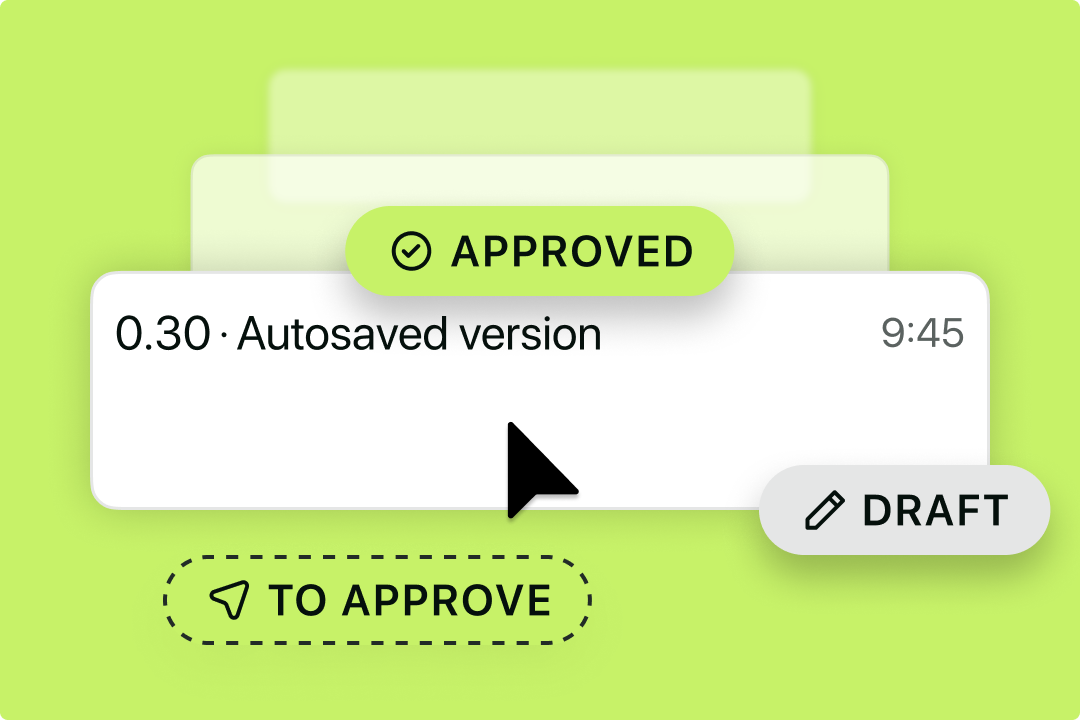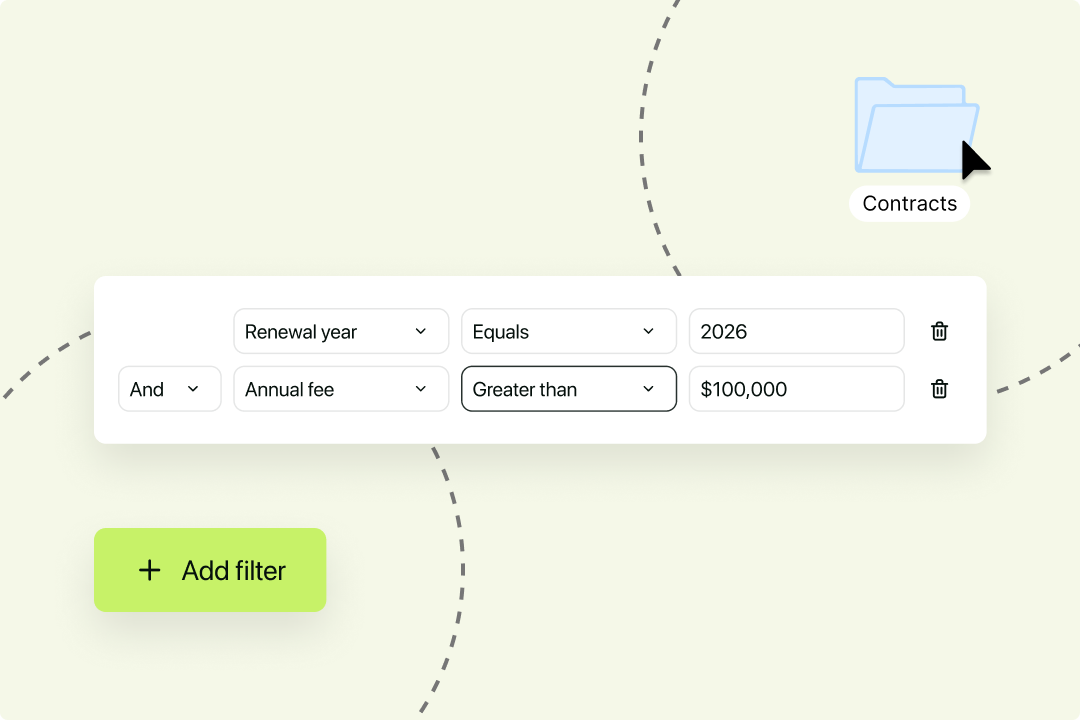Solutions
Customer Support
Resources
A contract management dashboard is a tool used to collate and present important information about your contracts in a digestible and visual format.
This acts as an overview of how your contracts are performing and how you’re tracking against legal KPIs, among other things. This is achieved by condensing otherwise complex contract insights into graphs and making it easy for users to visualize performance against certain metrics.
Contract dashboards are customizable, so they’ll often vary in appearance.
For example, some contract dashboards will be used to compile and filter the data contained within contracts. This is achieved by filtering contracts based on their smartfield values (e.g effective dates, contract types, contract status and other more). In Juro, this is called ‘table views’.
This type of contract dashboard is particularly useful when conducting a contract audit, or tracking a contract’s progress.
Juro’s customizable contract management dashboard enables users to quickly and efficiently create separate dashboards for different contract types, owners and clients, making it easy to access contract data at scale.
Other types include kanban boards that make it easy to visualize exactly where contracts are in their lifecycle, and analytics dashboards that can visualize process-related datapoints like how many contracts are created, which templates are used, and contract turnaround times.

Juro brings together all of these views and insights in one unified workspace, giving you full visibility into your contracts. With Juro, you can store contracts in one secure, dynamic repository, reducing risk and making post-signature contract management effortless.
Want to find see Juro’s customizable contract dashboards in action? Hit the button below to book your personalized demo.
Now that we know what a contract dashboard is and what it looks like, it’s worth considering whether or not you actually need one.
The impact of having a contract dashboard may be trivial for small businesses managing just a few contracts, but for businesses that are scaling rapidly or managing an increasing number of contracts, having a contract dashboard in place is essential to growing quickly and without risk.
In fact, there are plenty of benefits of using a contract management dashboard. We’ve listed a few of them below.
One of the biggest benefits of using a contract dashboard is that it makes contract data more accessible for the entire business.
Traditionally, there was no transparency around contracts and their data throughout the business, and this made it difficult for teams to collaborate on contracts.
Automatically capturing the data contained within a contract and presenting this visually means other teams can access contract data in seconds. This then empowers them to self-serve on contracts, rather than requiring constant oversight from legal.
{{quote1}}
Adopting a contract management dashboard is also an effective way to track progress against legal and company KPIs.
This is because contract management dashboards often capture valuable information, like the average value of contracts, the sum of contracts managed, how long contracts take to review, and how much is lost on missed contract renewals, for example.
Without a dashboard in place, legal and business teams would need to search high and low for this information every time they wanted to track their performance.
If companies truly want to be performance and data-driven, they should enable their teams with the right software to do that. Contract management software is an effective tool for this.
Distinct from when contracts are scattered across shared drives and email inboxes, a contract management dashboard makes it quick and easy for contract owners and senior stakeholders to monitor the progress of large contract quantities at once.
In a manual contract workflow, this would require updating a contract management spreadsheet every time a contract progresses. This is tedious and time consuming. However, it also makes it difficult to visualize exactly how many contracts require action and at what stage.
By contrast, Juro users can monitor the progress of large contract volumes at a glance thanks to the platform’s kanban style dashboard and automated contract tracking.

Contract dashboards can be used to help teams visualize exactly where contracts are sitting for the longest during their lifecycle.
For instance, if large volumes of contracts are piling up at the contract approval stage, it’s likely that the existing process used for managing approvals isn’t working, and the dashboard can serve as clear evidence for this.
Similarly, if certain types of contracts are consistently being held up at the negotiation phase, it could be that the terms within them need softening.
By enabling legal and business teams to visualize the contract workflow and patterns within it, a contract dashboard can deliver key insights to stakeholders and drive improvements to existing processes.
Unless you’re keen on the idea of manually updating the values within a contract dashboard, you’ll want a way to push data from your contracts and into these dashboards automatically. The best way to do this is by implementing a contract automation tool like Juro.
When contracts are created in Juro, they’re built as structured data and made fully searchable (thanks to OCR).
This means that all of the important contract values are captured within contract smart fields and can be pulled directly into fully customizable contract management dashboards.

These contract management dashboards can be created in seconds using Juro's intuitive filtering tools. They’re also fully automated and dynamic, meaning that the data you see is always accurate and up to date.
Not to mention that users can create different workspaces within the platform, meaning they have total control over which contract dashboards are visible throughout the business, and they can even export the dashboard’s contents into a CSV for external sharing.
This makes creating a contract dashboard in Juro a secure and frictionless way to capture, view and share the contract highlights that matter most for your business.
To find out more about how Juro can help your business to manage contracts end-to-end and capture contract data effectively, fill in the form below.
Lorem ipsum dolor sit amet, consectetur adipiscing elit. Suspendisse varius enim in eros elementum tristique. Duis cursus, mi quis viverra ornare, eros dolor interdum nulla, ut commodo diam libero vitae erat. Aenean faucibus nibh et justo cursus id rutrum lorem imperdiet. Nunc ut sem vitae risus tristique posuere.

